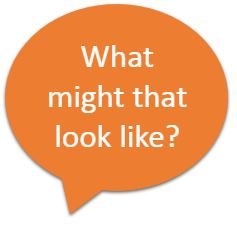| SECOND LEVEL | TECHNOLOGIES | |
| Experiences and Outcomes | Benchmarks | |
| Organiser – Digital Literacy | • Uses strong passwords.
• Demonstrates an understanding of the content they should include in an online profile. • Discusses the importance of being a responsible digital citizen, giving examples of appropriate online behaviours and actions. • Identifies appropriate ways to report concerns. • Has an understanding of the law as it relates to inappropriate or illegal online behaviours, |
|
|---|---|---|
| Cyber resilience and internet safety | ||
| I can explore online communities demonstrating an understanding of responsible digital behaviour and I’m aware of how to keep myself safe and secure.
TCH 2-03a Links to: Health & Wellbeing – Mental, Social, Emotional & Physical Wellbeing – Physical Wellbeing HWB 2-16a & HWB 2-17a
|
||
 |
Progression |
|
| I can/am able to | I can/am able to | I can/am able to |
| Say what a password is for & why I should not share my passwords | Describe how to choose a good password e.g. Glow | Show what a safe personal profile should contain |
|
|
||
|---|---|---|
| Name an online community | Describe a range of online communities | Describe the purposes of selected online communities |
|
|
||
| Say what is good & bad about online communities e.g. school or class social media, gaming communities | Say how online friends are different from “real” friends | Say whether an online community is closed or open – how to make profiles/details private |
|
“When learning about internet safety learners might: * Make links throughout all of their HWB learning to digital aspects of their life, following the code of: Be Safe, Be Smart, Be Kind.
* Explore links between internet safety and online shopping in their maths ‘money’ learning. This might be identifying good habits for online safety or exploring cyber security aspects, such as encryption and cyphers * Discuss the difference between friends (someone you know and have met) and online acquaintances (people you have met online and may not be who they say they are) * Suggest good internet etiquette, such as ways of behaving kindly to others online or supporting friends who are not feeling excluded or picked upon online * As Digital Leaders, hold Cyber Resilience and Internet Safety (CR:IS) assemblies to raise awareness amongst parents and peers about risks and safe practice online” |
||
| Explain why it could be dangerous to share personal information online | Show awareness that people I speak to online may not be who they say they are | Recognise who can see things I share online |
|
|
||
| Say how the things I do online are observed & can be traced back to me e.g. Microsoft Teams | Describe what kind of online behaviour is ok | Recognise that some information can stay online forever |
|
|
||
| Talk about things that happen online which are illegal | Understand the legal, safety or privacy rules of different social networks/communities | Identify ways to report concerns I have about what happens to me online e.g. CEOP “Report a concern” button, etc |
|
|
||
| Talk about rules & responsibilities online by looking at privacy & acceptable use policies
Glow Community Rules from Education Scotland Glow Connect
|
Say what I should do if I am worried about something which happens online | Say how I could evidence illegal or upsetting online experiences e.g. take a screenshot |
|
|
||
| Say why there are age limits on games & online communities | ||
|
|
||
|
|
||
 From Education Scotland National Improvement Hub “What digital learning might look like”:
From Education Scotland National Improvement Hub “What digital learning might look like”: